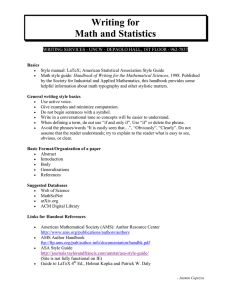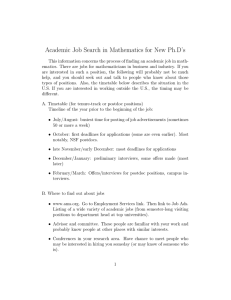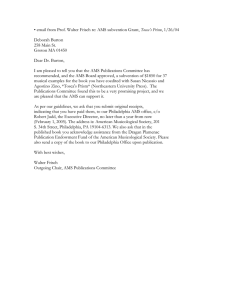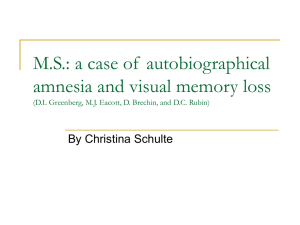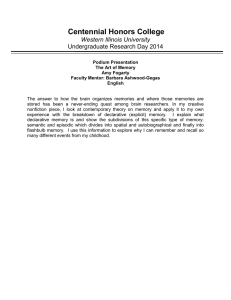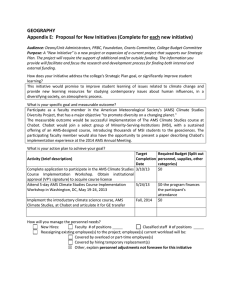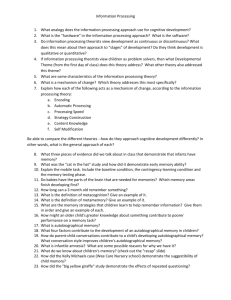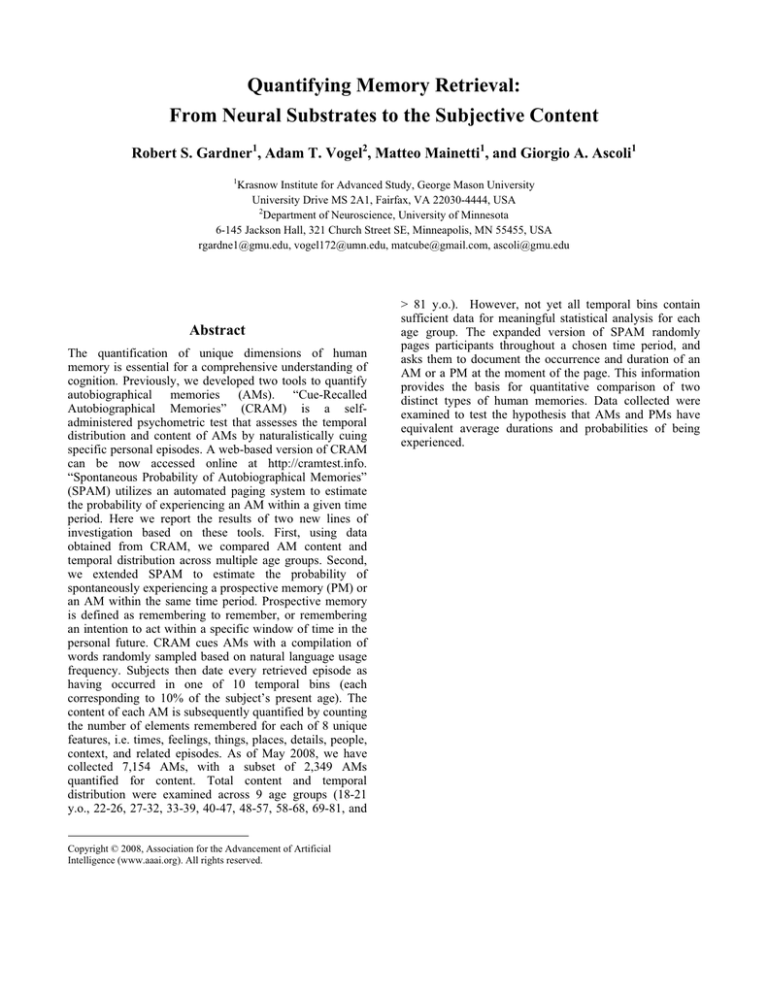
Quantifying Memory Retrieval:
From Neural Substrates to the Subjective Content
Robert S. Gardner1, Adam T. Vogel2, Matteo Mainetti1, and Giorgio A. Ascoli1
1
Krasnow Institute for Advanced Study, George Mason University
University Drive MS 2A1, Fairfax, VA 22030-4444, USA
2
Department of Neuroscience, University of Minnesota
6-145 Jackson Hall, 321 Church Street SE, Minneapolis, MN 55455, USA
rgardne1@gmu.edu, vogel172@umn.edu, matcube@gmail.com, ascoli@gmu.edu
Abstract
The quantification of unique dimensions of human
memory is essential for a comprehensive understanding of
cognition. Previously, we developed two tools to quantify
autobiographical memories (AMs). “Cue-Recalled
Autobiographical Memories” (CRAM) is a selfadministered psychometric test that assesses the temporal
distribution and content of AMs by naturalistically cuing
specific personal episodes. A web-based version of CRAM
can be now accessed online at http://cramtest.info.
“Spontaneous Probability of Autobiographical Memories”
(SPAM) utilizes an automated paging system to estimate
the probability of experiencing an AM within a given time
period. Here we report the results of two new lines of
investigation based on these tools. First, using data
obtained from CRAM, we compared AM content and
temporal distribution across multiple age groups. Second,
we extended SPAM to estimate the probability of
spontaneously experiencing a prospective memory (PM) or
an AM within the same time period. Prospective memory
is defined as remembering to remember, or remembering
an intention to act within a specific window of time in the
personal future. CRAM cues AMs with a compilation of
words randomly sampled based on natural language usage
frequency. Subjects then date every retrieved episode as
having occurred in one of 10 temporal bins (each
corresponding to 10% of the subject’s present age). The
content of each AM is subsequently quantified by counting
the number of elements remembered for each of 8 unique
features, i.e. times, feelings, things, places, details, people,
context, and related episodes. As of May 2008, we have
collected 7,154 AMs, with a subset of 2,349 AMs
quantified for content. Total content and temporal
distribution were examined across 9 age groups (18-21
y.o., 22-26, 27-32, 33-39, 40-47, 48-57, 58-68, 69-81, and
Copyright © 2008, Association for the Advancement of Artificial
Intelligence (www.aaai.org). All rights reserved.
> 81 y.o.). However, not yet all temporal bins contain
sufficient data for meaningful statistical analysis for each
age group. The expanded version of SPAM randomly
pages participants throughout a chosen time period, and
asks them to document the occurrence and duration of an
AM or a PM at the moment of the page. This information
provides the basis for quantitative comparison of two
distinct types of human memories. Data collected were
examined to test the hypothesis that AMs and PMs have
equivalent average durations and probabilities of being
experienced.


